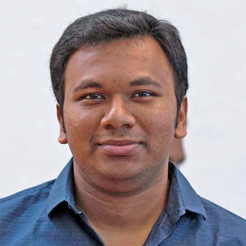 I am a doctor from India. I have three years of work experience in primary care in India. Currently, I have been working on a Master’s in Public Health at Icahn School of Medicine at Mt. Sinai since 2015.
I am a doctor from India. I have three years of work experience in primary care in India. Currently, I have been working on a Master’s in Public Health at Icahn School of Medicine at Mt. Sinai since 2015.
One of the main differences in the practice of medicine between India and the U.S. is the insurance system. Being an international medical graduate, I found it very difficult to understand insurance concepts and the way medical insurance works. Even after being in the U.S. for three years, I still find and learn new aspects of the way medical insurance works here.
In India, there are two main ways the medical system works: through state-run institutions and through private hospitals and practices. State-run hospitals do not charge patients except for advanced radiological and imaging studies. Even then, the charge for a CT scan is $10 and an MRI brain scan is $50. These payments are made in cash and done immediately before or after the test is performed. Generic medications are provided at no cost in the state-run hospitals, and some medications are sold at a subsidized rate. Private hospitals charge patients directly. ost payments are made immediately in cash or checks. There are some private hospitals like Aravind Eye Care System, which treat patients for $1. These low charges and free health care are possible in India because of the case loads and cash payment system.
In contrast, the U.S. health system is completely insurance driven. Although I had assumed that the U.S. health system is expensive, I was shocked at the huge bills for an ER visit and the cost of basic medications. I wasn’t aware nor had heard of cash payments in the U.S.
It was Benjamin Rush Institute that showed me that cash payments are possible in the U.S., too. BRI exposed me to the concept of DPC—direct primary care. After attending the DPC Nuts & Bolts to 2.0 conference in Orlando, I am sure that medical costs could be drastically reduced in the U.S., too. I was able to appreciate the cost reduction both for buying medications and for diagnostic testing when direct cash payments are made. The case studies of doctors practicing DPC was really useful to give the audience a context of how good the system is for both the practicing doctor and the patient.
I feel all primary care providers should make patients’ health their priority and work towards making this DPC venture a successful one. I feel still there is a long way to go before this could be implemented and practiced throughout the nation; yet, it could be achieved if the message reaches all physicians and the public. If the public demands these kinds of services, then doctors and institutions will slowly start switching over to DPC.
BRI is doing a wonderful job by targeting the right population: young medical school students. BRI could also plan on targeting the public, so they could have far reaching benefits for their efforts. Having practiced in India, I really am able to appreciate how good the system of DPC is for patients and their families. I am planning to do my residency in Family Medicine and start my own private practice. I will definitely be practicing DPC in the near future. Thanks to BRI for introducing me to such a wonderful opportunity in the US.
